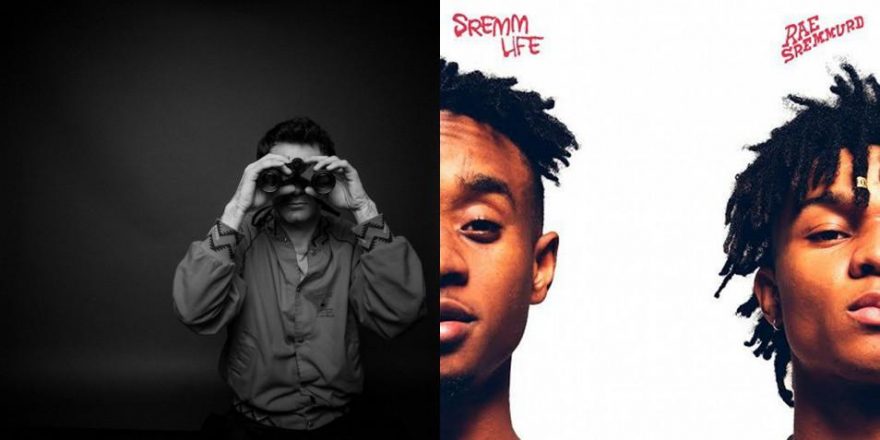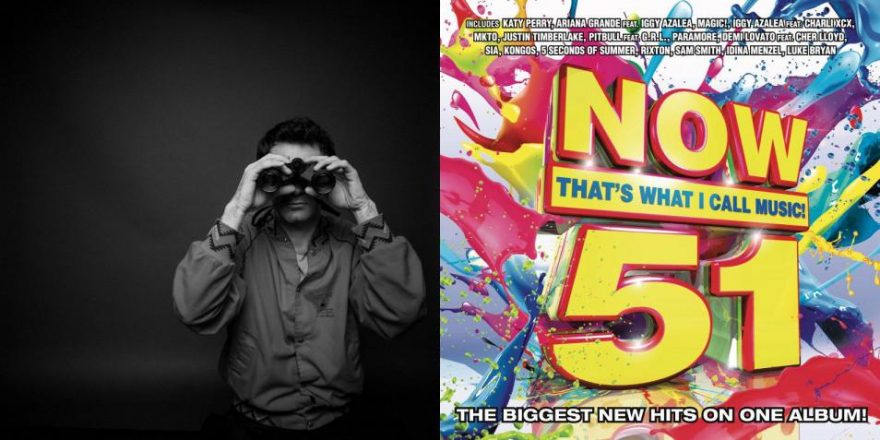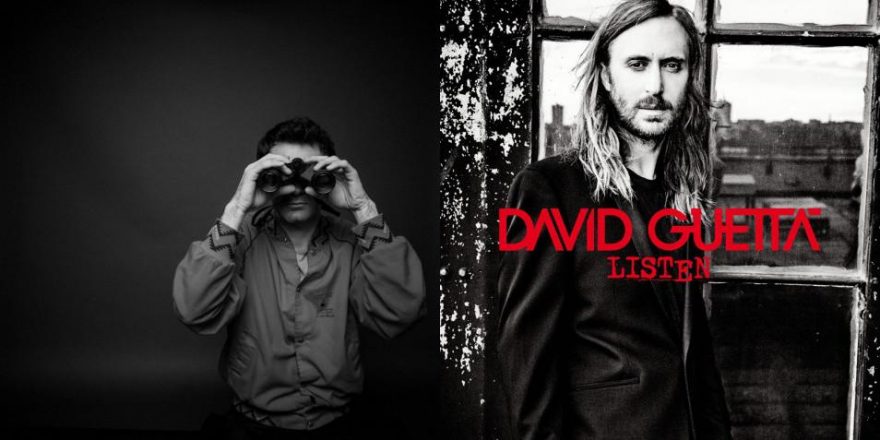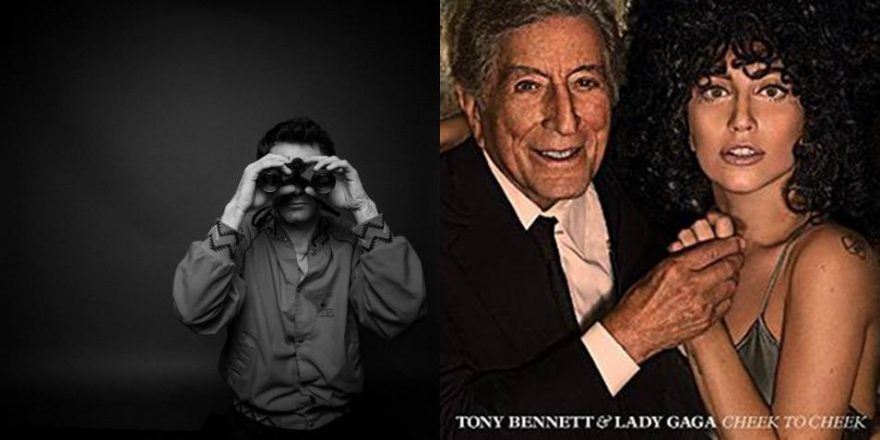I’m at a wedding. I am in the wedding band. It’s later in the night, as it must be, for this song — the drums count it off and the band drops the harmonic bomb that is “Pony” by Ginuwine. The grandparents and children are gone, and the remaining guests go bananas. The dance floor is on fire, or at least at a simmer, since this is a Westchester wedding. But context is everything, and all you need to know is the uncle, who hasn’t been on the dance floor much until now, rocks back and forth so hard that he falls backwards and his hearing aid comes out. Then he pops back up and keeps dancing. That’s the power of a song. That’s a joyful jam.
This is a story about joy. This is a story about beautiful feelings, bubbling under the skin. This is a story about YouTube — wait, come back. Of course YouTube is the void of nonsensical infinity, of unboxings and the inside jokes of younger generations, of TedTalks and bedroom cover songs by some fifteen year old who isn’t embarrassed to look directly at the camera and into the souls of the kids who watch him do his sensitive take on “Margaritaville” or whatever the hell kids are into these days that rockets his career to viable heights. YouTube is all of that.
But it’s also where this Curtis Mayfield performance is. It’s where this Will Ferrell Mark Twain Prize acceptance speech is. Dolly Parton bravely singing while surrounded by vaudevillian fire jugglers. These gold deposits are lodged throughout the internet, and if the internet’s where I must go to find out if it’s raining right now then by gum I’m going to find some magic in there as well!
This is a story about listening. And the internet is always listening. We all have those friends who invested early in cryptocurrency who tell us to tape over the camera on our MacBook and change our logins regularly, but who has the time? I’m running out of dead pets to use as passwords (RIP ************* and ##########), and I’m not going incognito every time I look at a piece of recording gear online.
So whenever I watch my stories on my YouTube, I know I’m gonna get slammed with an ad. Sometimes they are advertising something irrelevant, sometimes it’s a new Pro Tools plug-in, often it’s something I already bought (though you can’t have too many mortars and pestles). But a few months ago, a voice from my childhood started speaking to me whenever I pressed play. Every day, this ad haunted me. This familiar voice. This voice wanted to teach me something. And after one hundred instances of the ad slapping me in the face, I caved. I put aside a day and I watched the entirety of the Timbaland Masterclass.
This is a story about learning. The Masterclass series is a for-profit video education enterprise banking on you, the nobody, paying $90 for a single Masterclass or $180 for one year unlimited access to every Masterclass offered from various famous folks on their expertise. Penn & Teller teach magic; Gordon Ramsay teaches cooking; Jane Goodall teaches…gorillas. For one fee, you get it all. Professionally filmed, slickly advertised, and highly suspicious. Satellite learning is not new and is not unsuccessful, but a master class by design is a burst — not a year-long lesson plan, but a window into what drives the teacher, and what they can teach on a grander scale that you can absorb and apply to your life. The disconnect of the screen can be pretty prohibitive in a creative learning environment, and as a student of music since age eight with a quality supply of attention deficit, I can personally attest to absorbing much more from a person in the room than from a person on a screen. On the other hand… it’s Timbaland.
Has the internet been listening to me longer than I realized? Since I pulled the AOL disk out of my mailbox in 1995? Did it have ears in my minivan listening to the radio on the way to Hebrew School in 1999? Did it survey my reactions to jams at the countless Bar Mitzvah dance floors in 2000? (Check back for my Masterclass, “Adam Schatz Teaches Jewish Suburbia,” out later this year.) I was excited for a window into Timbaland’s approach and, honestly, just to hear him talk for three hours. After all, that signature speaking voice has been piping in on hit after hit since since before I bought my first turntables and DJ’ed the overnight basketball sleepover at the Boys & Girls Club. You knew when Timbaland was producing the track because he wiki-wiki-ed and heavy breathed and telephone-voice-intro’d all over that thing. And you didn’t even mind because he had the pocket to back it up, the signature sonics and melodic ear candy that brought you back to JAM’N 94.5 every day, turning up the volume and pretending your Toyota Previa had hydraulics before your dad yelled at you to cut it out. Hip hop is an interrupting art form, after all, with surprise guests and producers speaking their credits over top. It’s really the only music like it, and I love it so. When you’ve got the radio cranked and you are hearing a song for the first time, you don’t know who’s going to come in and elevate. Timbaland was a constant whisperer, letting you know he was in the mix, but never shouting. Lil Jon and Funkmaster Flex screamed their presence, as though you’re listening to the jam through a drive-thru window and they had to make sure you got it right. That was their brand.
This is not a story about a brand. Hip hop how-tos could so quickly side-step into branding, being business, man and a businessman. This is a Masterclass in “production and beat-making,” but it’s still noteworthy that the branding talk is all but absent. This isn’t a crash course in how-to-get-that-signature-Timbaland-sound. If anything, it’s a magicians reveal that there is no signature Timbaland sound. The sound changes, and it’s why Timbaland still works today. What he brings to the table is an attitude — an attitude rooted in joy.
From the very beginning of the lessons, Timbaland comfortably talks to the camera and lets me know that he has and always will exclusively be driven by what feels good. “You’re gonna learn about feeling,” he tells me. “Getting the groove, enjoying one another, fellowship.” He introduces me to his “Team Timbo,” the one-anothers he enjoys, who are all much less comfortable talking into the camera, because they aren’t Timbaland. He’s got his engineer Chris with an essential ponytail, and two younger laptop wizzes Fede and Angel who are there to interpret and contribute to Timbaland’s beat development. It is truly interesting to see how 2019 Timbaland and his team operate, with three simultaneous Ableton rigs on laptops that their engineer is constantly recording from as they freewheel through versions of the ideas grown from Timbaland’s beat-boxed source material.
Alone in a vocal booth I watch Timbaland build a beat from scratch, chirping melodies, doofing kick drums, zitzing snares and snapping snaps, all a cappella. “I fill up the space with my mouth,” he tells me. “You can edit anything you do, so just be free with it.” From another source, such generalizations might seem unhelpful, or a bit just be yourself-y. But there is a genuineness in these positive affirmations. Timbaland was put on Earth with a gift for feeling a groove and being able to get there any way he can, and watching him work in real time, bringing a beat into being from just his mouth, is the thesis for his whole Masterclass, even though it isn’t explicitly stated. He lived and listened and practiced and developed an instinct, and every hit he has ever made has come from a joyful following of that instinct.
And so 2019 Timbaland takes the results of that beat-boxed sketch into the tangible world of 2019 hip hop, pacing around the studio and vocalizing his instincts as the computer bound Fede and Angel add synthesizers and warped samples at a lightning pace. Timbaland sits at an Ableton Push controller and lays down a drum from a grid that has no labels, letting him continue to compose from his gut. I am shown Timbaland’s screen and he tells me that he never labels his drum sounds beyond numbers, avoiding superlatives like “Best Kick” and “Fattest Snare,” so that every time he sits to create, he can start from scratch. He tells the engineer to turn up the song in its current state and I watch Timbaland jump and dance around the room to his own creation, smiling big and passing his own test for whether or not the song is going to work. As the beat develops in front of me, I become confident that I don’t like the music. The further it gets from Timbaland’s mouth, the further I lose the feeling. But that’s not anyone’s fault but my own. I am old, by rap-fan standards. Modern hip hop, triplet rap, side-chained soft synths — it doesn’t connect with me. And that’s fine. I had my time. So I take what 2019 Timbaland says and consider how that approach manifested in 1996 Timbaland. And the Masterclass takes me there.
*Bwaaaap. Bwaaaap bwaaaap bwaaaaaap. Bwaaap Bwaaap bwaaaaap*
1996 Timbaland, and countless other producers at that time, worked off the Ensoniq ASR-10 sampling keyboard. Samples could be recorded, imported and sequenced all within the keyboard’s memory. Additional sounds could be loaded via disks, chopped, and mapped across the keys, such as drums, melodic instruments, and car screeches, like the one heard in Ginuwine’s “Pony” on every other fourth beat. It’s ear candy that is easily missed when focusing on the “bwaaaps” and the heavy breathing. The screeching car sound is spotlit by Timbaland as he spends a few minutes reminiscing on “Pony” with me, under the lesson, “Song Origins.” Later on, he gives a similar treatment to Missy Elliott’s “Gossip Folks” and Aaliyah’s “Are You That Somebody.” This is less of a technical here’s how I did what I did and more of a walk down memory lane. He happily zips his hands around on an X/Y axis highlighting the different sonics, describing his instincts for space-filling. The “Pony” beat is perfect, balancing hooky sounds and the silences in between, and there’s an alchemy to it that just can’t be taught through the screen. But watching the producer who put it together smile and bob is still maybe worth the price of entry.
“Pony” was arguably Timbaland’s first world-famous beat, made in tandem with songwriter Static Major who is often mentioned with reverence during this Masterclass (Static Major died of an autoimmune disorder in 2008). They were both part of the Swing Mob stationed at a recording studio complex in Rochester, NY in the early ‘90s, led by Devante Swing of Jodeci who assembled all of his proteges under one roof to embark on a creative factory output, a crew which also included Missy Elliott, Tweet, Magoo, Ginuwine, K-Ci, Jo Jo, and recording engineer Jimmy Douglass. For a window into the raw goodness of that collective, check out this unreleased demo sampler.
In an interview with Wax Poetics about the many hits that came from that two year period, engineer Jimmy Douglass says, “History made the song what it is. We didn’t. We were just doing our work. I tell people that you aren’t back there then. You’re here now. If you do what you’re supposed to do now, then history will decide how dope this period was, not you. If you lived back then, you would’ve enjoyed it, but there was no way you could’ve known what it was going to become.”
On Timbaland, with whom Douglass continued a long-standing working relationship, he remembers “The great thing about Tim was he would sit there all day, while everyone was doing stuff, and he would have his ASR-10 with him walking around the place making beats. He would wait until everyone was leaving, and he would come upstairs and say to me, ‘Oh, where are you going?’ I’d reply, ‘I’m getting ready to go home. What do you mean where am I going? I’m going home. I’m tired.’ He’d say, ‘Oh.’ I’d reply, ‘What is it?’ He’d say, ‘Oh. I just wanted to put this beat down.’ I’d say, ‘OK, Tim. Let’s do it.’ And the next thing I know, it’s already tomorrow.”
This is a story about people. It starts in a lightless recording studio, often alone, but as soon as possible Timbaland engages Jimmy Douglass, roping him into the morning hours to follow his gut and track the sounds he loves to make. Timbaland watches and learns from Devante Swing, or grows up in Virginia taking notes from local hero Teddy Riley (with Pharrell & Chad Hugo doing the same). And the learned skills to adapt and create the beat begets interfacing with more people. Now it’s with the rapper, the singer, where the stakes are raised and the elements can change again. And again, being a people person can’t be taught through a screen. But Timbaland gives us his perspective, speaking on how he works with the people he is drawn to.
On Missy Elliott, he tells me that she insists he not clutter the track with too many sounds. “She’s an instrument herself,” Timbaland says, and demonstrates how Missy’s voice can fill up so much space that he needs to embrace the minimal approach, still driving from his own instinctual core but always considering the person who’s taking what he did to the next level. The same amount of personal care goes to Jay Z. To Busta Rhymes. It’s joyful experimentation, and when the right sonics collide and Timbaland’s eyes widen as the artist’s eyes widen, the magic becomes tangible, and maybe that track gets finished. Then the people affected are exponentially growing, the listeners of the world. The uncles on the dance floor. The teenagers in the mini-vans.
Although this Masterclass was purchased as a lesson, I have to experience it as a story. A welcome invitation to explore how Timbaland lives and works and tries and tries and tries again until it’s already tomorrow. This Masterclass can’t be a traditional lesson, because the tale of Timbaland is so clearly loaded up with in-person learning, development, testing, failing and growing. If he didn’t learn via satellite, why should I be able to? My life wasn’t changed by my three hours with Timbaland, and yours won’t be either. But I did get see a brilliant musical brain show and tell what matters most to him when creating: communal energy, space, and constant potential for change in the chase for what feels good. His instincts were shaped by the company he’s kept throughout the years. And I’m realizing mine have been as well. Instincts that put me on my own musical trajectories. A childhood of loving music and allying with creative and supportive folks has certainly let me to write songs that I want to listen to, to try to make people feel good, to chase the vulnerable purity of hearing the best music from the first time as a kid. And when I perform, when I DJ, when I play the odd wedding, I get to put those muscles to work. Perhaps the joy in the creation of the music I heard in the car was contagious. And I can’t argue that that isn’t a bit of subconscious satellite learning right there.
As soon as I complete the three-hour class, I start producing a beat. I try my best to embody Timbaland’s workflow of beginning as loose as possible, singing and tapping out raw ideas, committing them to tape to build upon, just to see what happens, because you won’t know if you don’t try. I grab drum sounds and shape them in a way that feels good to me. I try not to think What Would Timbaland Do?, but rather What Would Timbaland Want Me To Do? And yet I still find myself being drawn to some hand drumming sounds that can generously be described as a complete rip-off. Must be all that dang Timbaland I’ve been listening to.
I learn how hard it is to be selective and scarce. My beat is almost immediately too cluttered, and when I trim it down I begin craving some outer world non-computer help. I think WWTWMTD? and remember a field recording I had made of a particularly loud woodpecker in Massachusetts last summer; the WAV file is still on my computer and I quickly import it into the Maschine software I’m using, and begin to play the woodpecker sound, pitching it up and down to a degree where it now sounds like crickets playing the the claves. I go back to the Masterclass tab on my browser hoping to find Timbaland giving me a knowing nod, maybe reach through the screen and offer up a high five. But he was gone. Instead I found new faces looking to teach me something else. Neil Gaiman. Judy Blume. Steph Curry. Karl Rove, for some reason. They can’t make my beats better. But neither can Timbaland, anymore. I turn up my beat, dance around my room, and I start to feel good.
(Photo Credit: left, Lisa Schatz)








